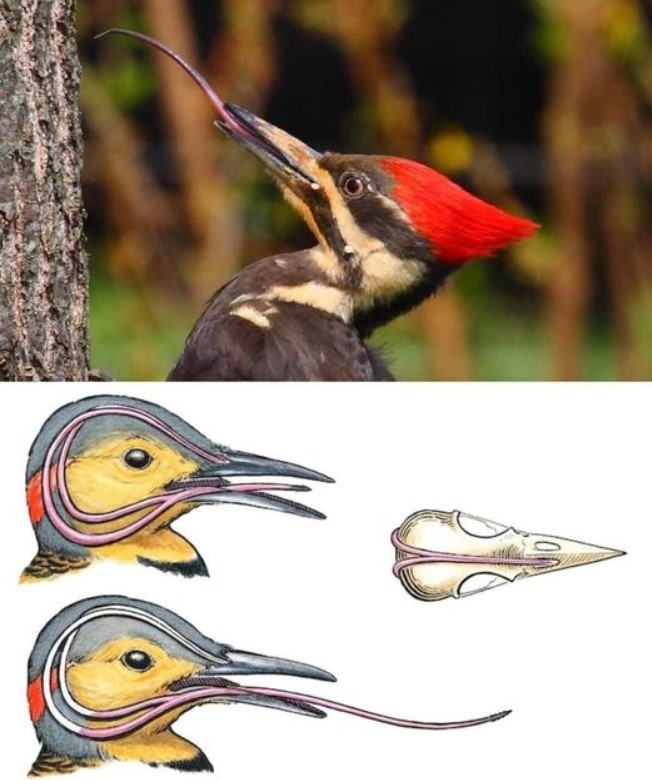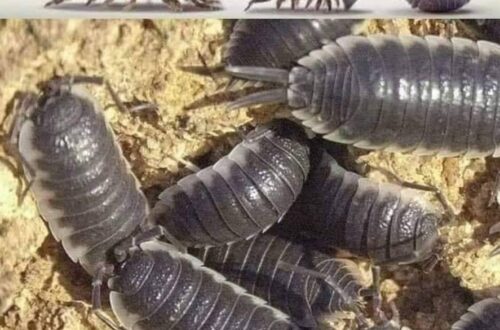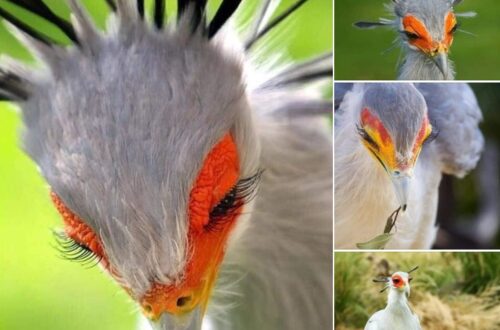A woodpecker’s tongue is so long that it wraps around its skull to protect its brain while hitting a tree or other hard surfaces. This, combined with other factors like: super-strong neck muscles, spongy bone plates in the skull that act like a football helmet, and a very small amount of cerebrospinal fluid surrounding its brain, all help prevent a woodpecker from rack your brain while pecking with a force of more than 1000g.
Two fledglings waiting for their mother to return to the nest were killed after a Gila woodpecker stopped by for a quick snack. The woodpecker proceeded to ram its beak into the back of the doves’ skulls, just enough to crack them open and slurp up their brains. Even the researcher who captured the video in the first place reported it was gruesome and difficult to watch. This was the first time that this behavior had ever been captured on camera, and it has changed many people’s perceptions of harmless, cartoon-like woodpeckers.
“Woodpeckers that excavate deeply into timber, such as the pileated, have shorter tongues with spear-like tips bearing backward-facing barbs,” explains Cornell. “Sapsuckers have brush-like tongues that hold the sap of trees by capillary action. Species that feed from crevices and surfaces of trees usually have longer tongues with bristles concentrated at the tip.”
The typical diet of a woodpecker includes insects, berries, and an assortment of nuts and seeds. However, some woodpeckers have a much broader palate than was previously believed. Woodpeckers are opportunistic omnivores, meaning they will eat just about anything they come across. They will eat the eggs of other birds, and have even been documented chowing down on leftover beef bones and bacon. They have been observed to prey on other species of birds, as well as some reptiles and other invertebrates. Tests have also shown woodpeckers will even eat the flesh of cows and sheep if it is provided.
Woodpeckers are a highly successful group of birds, thanks in large part to their many adaptations. They have reportedly survived for 25 million years, and many species are abundant throughout their natural range. There are over 200 species in the family Picidae, which includes woodpeckers and their closest relatives. While woodpeckers can be found commonly on virtually every landmass except Australia, Madagascar, some Indonesian islands, and the poles, there are a few species are in danger of extinction.
In the United States, both the red-cockaded woodpecker and the ivory-billed woodpecker are protected under the Endangered Species Act. Many woodpeckers are considered pests and are killed to protect arboreal property. More awareness is needed to protect vulnerable woodpecker species from eradication.





